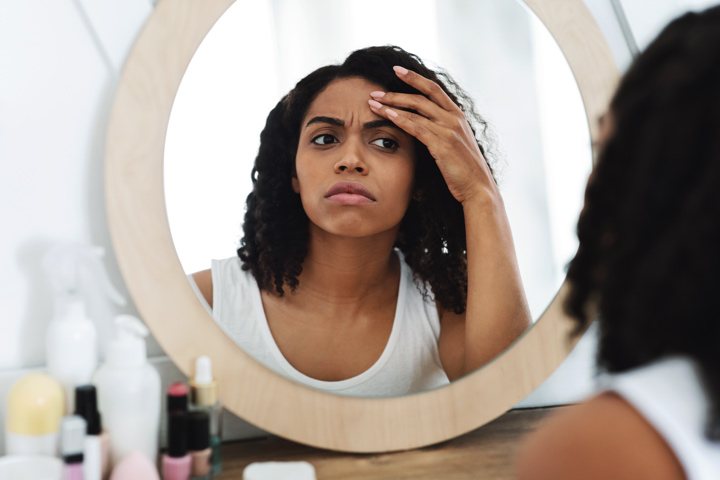Body dysmorphic disorder is a mental health condition in which you can’t stop thinking about one or more perceived defects or flaws in your appearance. Basically, a flaw that appears minor or can’t be seen by others, But you may feel so embarrassed, ashamed and anxious that you may avoid many social situations. So a person that has Dysmorphia constantly focuses on appearance and body image, repeatedly checking the mirror, grooming or seeking reassurance, sometimes for many hours each day.
Body dysmorphic disorder affects people of any gender. It tends to begin during the teen years or early adulthood. Body dysmorphic disorder is a chronic (long-term) condition. The most common areas of concern for people with this condition include: Skin imperfections, Hair, including head or body hair or baldness, Facial features, most often the nose, Stomach or chest, and many others.
Causes
According to an article by MayoClinic published on the 19th March 2022; it’s not known specifically what causes body dysmorphic disorder. Like many other mental health conditions, body dysmorphic disorder may result from a combination of issues.
Social media/low self Esteem
Constant use of social media and “selfie taking” may translate into low self-esteem and body dysmorphic tendencies. According to Wikipedia, the sociocultural theory of self-esteem states that the messages given by media and peers about the importance of appearance are internalized by individuals who adopt others’ standards of beauty as their own. Due to excessive social media use and selfie taking, individuals may become preoccupied about presenting an ideal photograph for the public. Specifically, females’ mental health has been the most affected by persistent exposure to social media. Social media may therefore trigger one’s misconception about their physical look. Similar to those with body dysmorphic tendencies, such behavior may lead to constant seeking of approval, self-evaluation and even depression.
Fear of being rejected/ Depression
If you worry about not fitting in, or being rejected or lonely, you may develop thought patterns that can lead to BDD. For example, if you believe that you need to look a certain way to maintain friends or find a partner, you may develop obsessive worries about your appearance. If a relationship then breaks down or a friendship group changes, this could make your worries worse, which then causes a person to fall into depression and anxiety.
Pressure from People
According to an article by WebMd published on the 30th of June,2020 Parents and others who were critical of the person’s appearance can cause Body dysmorphic disorder. The constant crude comments of a person body structure can trigger this disorder. For example, constantly jabbing at a person’s size and pressuring them to become something unreasonably fit according to societal standards aids this disorder.
Trauma
Experience of traumatic events or emotional conflict during childhood can also cause Dysmorphia disorder. A person may be more likely to develop BDD if they were teased, bullied or abused when you were a child or any other form of trauma. Going through traumatic experiences cause you to develop a negative self-image, which can lead you to have obsessions about your appearance.
When to see a doctor: Shame and embarrassment about your appearance may keep you from seeking treatment for body dysmorphic disorder. But if you have any signs or symptoms, see your health care provider or a mental health professional.



